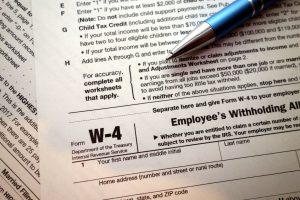 When should you revise your tax withholding?
When should you revise your tax withholding?
If you receive a large refund from the IRS when filing your income tax return, or owe the IRS a substantial amount when filing, you should consider adjusting your income tax withholding.
Your income tax withholding is based on the number of allowances you claim on your Form W-4, Employee’s Withholding Allowance Certificate. This form is typically filled out when you first start a job with your employer. This determines the amount of income tax that comes out of your paycheck each pay period.
If your withholding is too high, you are, in effect, giving the IRS an interest free loan. Although the overpaid tax will be refunded when you file your return, it would have been better for you to have access to these funds throughout the year. In this case, you should reduce the amount your employer withholds to increase your pay in your paycheck.
Do you owe the IRS too much?
On the other end, there are taxpayers who owe the IRS large balances when filing their taxes. Yes, they have access to their money all year long, but they will have to pay this back on April 15th. Most of the time, this repayment comes with tacked-on interest and penalties from the IRS.
It is your responsibility to change your withholding with your employer. At any time, you can provide them with an updated Form W-4 and adjust your withholding.
When to review your withholding
You should check your withholding anytime there is a significant financial change in your life, including the following:
– You getting married, divorced, or having children.
– Increase or decrease in working wages.
– You or your spouse start or stop working, start a second job.
– Changes in deductions such as: buying house, paying for child care, medical expenses.
It is never too late to change your withholding for the current year. If you believe that you may be substantially over or under withheld, you can make the necessary adjustments to correct that. This is one of the more complex issues that a taxpayer faces.
We’ve got your back.
If you think your situation calls for a withholding adjustment, please contact us today. Contact KRS manager Lance Aligo, CPA, MAS at laligo@krscpas.com or 201-655-7411.

 When should you revise your tax withholding?
When should you revise your tax withholding? It is payday and you see your paycheck hit your bank account just in time to pay your student loans. How depressing.
It is payday and you see your paycheck hit your bank account just in time to pay your student loans. How depressing. If you were married this past year, congratulations!
If you were married this past year, congratulations!